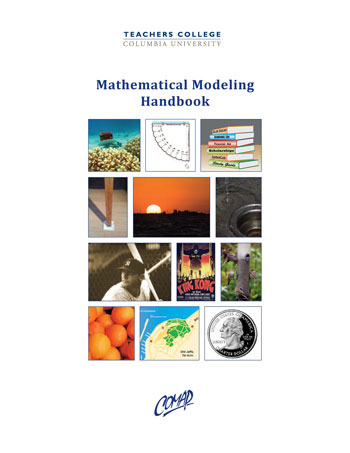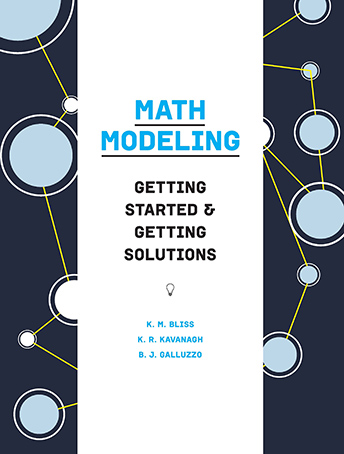What is Math Modeling?
GAIMME

Guidelines for Assessment and Instruction in Mathematical Modeling Education
The shared hope and vision of the Consortium for Mathematics and its Applications (COMAP) and the Society for Industrial and Applied Mathematics (SIAM) is that this report motivates the educational community to make a place for mathematical modeling in curriculum, from pre-K through undergraduate levels. Further, that the value and importance of the skills required to execute math modeling effectively - logical thinking, problem solving, sensitivity analysis, and communication to name a few - are recognized and nurtured.
Our primary audience is you the teacher. While we hope that test and policy makers will read this document and use it in their decision-making, it has been written for the front-line teacher. We hope and intend that these guidelines will be of help as you incorporate the practice of mathematical modeling into your classrooms.
A major reason for the creation of GAIMME was the fact that, despite the usefulness and value in demonstrating how mathematics can help analyze and guide decision making for real world messy problems, many people have limited experience with math modeling. We wanted to paint a clearer picture of mathematical modeling (what it is and what it isn't) as a process and how the teaching of that process can mature as students move through the grade bands, independent of the mathematical knowledge they may bring to bear.
Learn MoreThe Mathematical Modeling Handbook

The Teachers College Mathematical Modeling Handbook
You need great materials to teach mathematical modeling as mandated by the Common Core State Standards for Mathematics (CCSSM). The Teachers College Mathematical Modeling Handbook is the ideal text to do just that.
Helping students develop a mathematical disposition encourages recognition of mathematical opportunities in everyday events. The TC Mathematical Modeling Handbook bolsters the CCSSM approach to interpret modeling not as a collection of isolated topics but in relation to the content standards. The Handbook provides modules containing teacher guides, student activities, possible solutions and natural classroom extensions for over 25 topics, together with references to specific modeling standards for which the topics may be appropriate.
Prepared under the direction of the Department of Mathematics Education at Teachers College/Columbia University
Learn MoreAdditional Math Modeling Handbooks

Visit this page for free downloads of Math Modeling: Getting Started and Getting Solutions by K. M. Bliss, K. R. Fowler, and B. J. Galluzzo and Math Modeling: Computing and Communicating by K. M. Bliss, K. F. Kavanagh, and B. J. Galluzzo, and R. Levy, both published by SIAM
Learn More